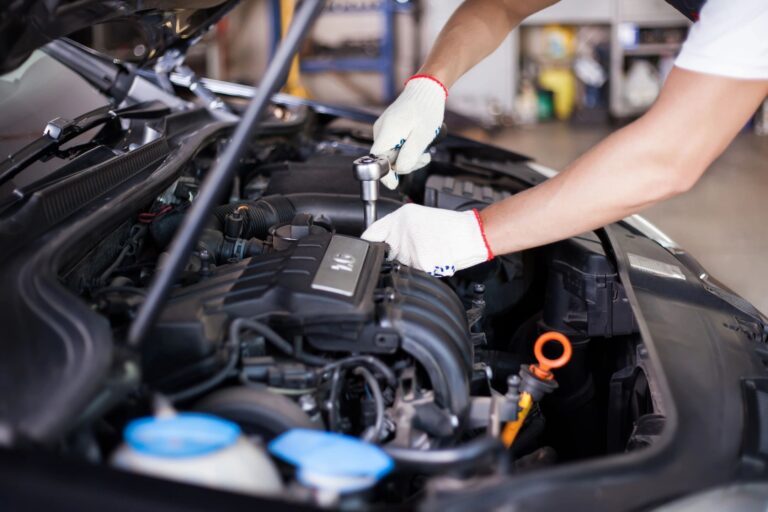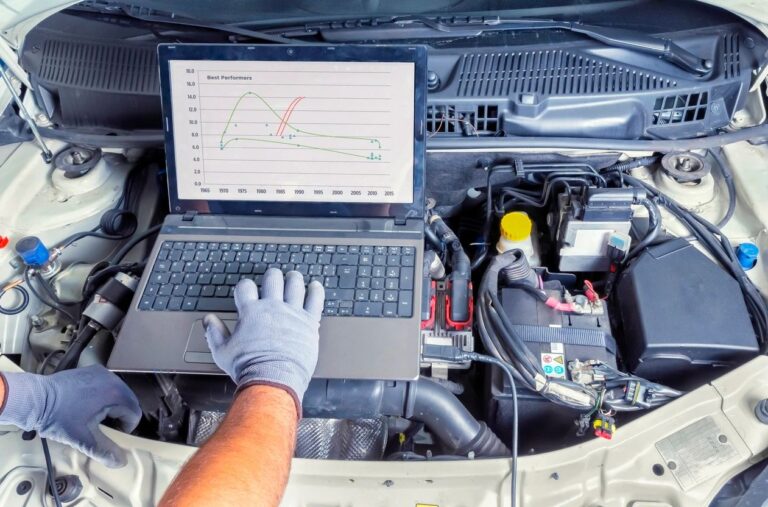Corroded battery terminals can lead to a range of issues, from difficulty starting the car to complete power failure. Corrosion on the terminals—often seen as a white, green, or blue residue—acts as a barrier, impeding the flow of electricity between the battery and the car’s electrical system. Here’s a breakdown of the causes, signs, and solutions for corroded battery terminals.
Causes of Battery Terminal Corrosion
- Battery Acid Leakage
Over time, small amounts of sulfuric acid can escape from the battery, especially through the vents. This acid reacts with surrounding metals, creating corrosion on the terminals. - Electrolyte Vapor
Batteries release hydrogen gas as they discharge, and this gas can react with metal parts of the battery terminals, resulting in corrosion. This is common in lead-acid batteries, particularly when they’re overcharged. - Overcharging
Overcharging a battery causes excessive heat, increasing the risk of acid leakage and gas release. This results in faster corrosion buildup around the terminals. - Age of the Battery
Older batteries tend to corrode more quickly, as their components begin to break down and release gases, making corrosion more likely.
Signs of Corroded Battery Terminals
- Difficulty Starting the Engine
Corroded terminals can prevent the battery from supplying adequate power to the starter motor, leading to slow or hesitant starts. - Dim Lights or Electrical Issues
Corrosion interrupts the electrical current, often causing dim headlights, flickering dashboard lights, or malfunctioning accessories like power windows and the radio. - Visible Residue on Terminals
A buildup of white, green, or blue residue around the terminals is a clear indicator of corrosion. This residue can sometimes become thick, completely covering the metal connection points. - Battery Warning Light
In some vehicles, a corroded connection can trigger the battery warning light on the dashboard, indicating an issue with the power supply.
How to Clean Corroded Battery Terminals
- Turn Off the Vehicle and Disconnect the Battery
Always turn off the engine and disconnect the battery before cleaning. Start by removing the negative terminal, followed by the positive terminal, to avoid accidental sparks. - Prepare a Cleaning Solution
A simple mixture of baking soda and water can neutralize the acid on the terminals. Dip an old toothbrush or a battery brush into the mixture and scrub the terminals gently. - Scrub the Terminals and Connectors
Use the brush to remove all corrosion from the terminals and connectors. Be thorough, as even small amounts of corrosion can interfere with the connection. - Rinse and Dry
Rinse the terminals with a small amount of water and dry them completely with a clean cloth. Make sure all moisture is removed to prevent future corrosion. - Reattach Battery Cables
Reconnect the terminals, starting with the positive terminal, followed by the negative. Tighten the connections securely to ensure good contact.
Preventing Future Corrosion
- Apply Anti-Corrosion Grease: Use a thin layer of anti-corrosion grease or petroleum jelly on the terminals to create a protective barrier against corrosion.
- Install Terminal Protectors: Felt battery terminal protectors soaked in anti-corrosion solution can also help prevent buildup.
- Regular Inspections: Check the battery terminals every few months, especially if you live in a hot or humid climate, as these conditions can accelerate corrosion.
When to Consider a Replacement
If the battery is old or the corrosion is severe, it may be time to replace the battery altogether. In many cases, extreme corrosion can be a sign of internal battery damage, reducing its effectiveness even after cleaning.
Corroded battery terminals may seem like a minor issue, but they can lead to major inconveniences and electrical problems if ignored. Regularly inspecting and cleaning your battery terminals helps ensure reliable performance and prolongs the life of your battery.




